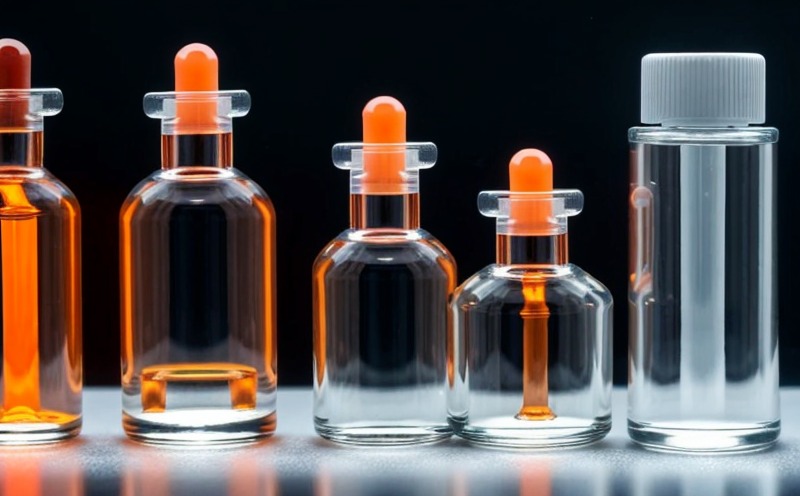ISO 13320 Particle Size Distribution in Safety Testing of Nanoparticles
The ISO 13320 standard is a cornerstone in the field of nanotoxicology, providing a standardized method for measuring particle size distribution using laser diffraction. This service ensures that safety assessments are conducted accurately and consistently across industries.
Nanoparticles exhibit unique properties due to their small size and large surface area-to-volume ratio. These characteristics make them highly versatile in various applications such as medicine, electronics, and cosmetics. However, the same attributes can also pose potential risks to human health and the environment if not properly managed.
The ISO 13320 particle size distribution test is critical for ensuring that nanoparticles are used safely. By measuring the size distribution of these particles, we can assess their behavior in biological systems more accurately than with bulk materials. This information is essential for predicting potential adverse effects and developing appropriate safety measures.
The laser diffraction technique employed by this service captures a wide range of particle sizes from submicron to several millimeters. This broad coverage ensures comprehensive data that can be used across different research and development stages. The accuracy and precision of the results are further enhanced by automated calibration procedures and continuous quality control measures.
Our team of experts uses state-of-the-art equipment, including laser diffraction analyzers from leading manufacturers like Malvern Panalytical and Beckman Coulter. These instruments provide high-resolution data that can be used to identify specific particle size distributions and their corresponding volumes or masses.
The process begins with careful preparation of the sample, which involves dispersing the nanoparticles in a suitable medium such as water or ethanol. This dispersion step is crucial for obtaining accurate measurements since agglomerates may lead to erroneous results. After dispersion, the samples are analyzed using laser diffraction according to ISO 13320 guidelines.
The resulting particle size distribution curves provide valuable insights into how nanoparticles might behave under different conditions. For instance, smaller particles tend to penetrate biological barriers more easily than larger ones, which has significant implications for their toxicity and bioavailability. Additionally, the surface area-to-volume ratio increases with decreasing particle size, potentially enhancing reactivity.
| Aspect | Description |
|---|---|
| Sample Preparation | Dispersing nanoparticles in a suitable medium to ensure accurate measurements. |
| Laser Diffraction Analysis | Measuring particle size distribution using ISO 13320 guidelines. |
| Data Interpretation | Analyzing the results to determine potential risks associated with nanoparticle use. |
The data derived from this testing process is then used in conjunction with other safety assessment tools, such as toxicity studies and in vitro experiments. This holistic approach helps ensure that any nanoparticles being developed or utilized are safe for their intended applications.
- Comprehensive Particle Size Distribution: Captures the full range of particle sizes present in the sample.
- Informed Decision-Making: Provides critical information needed to make informed decisions about nanoparticle safety and efficacy.
- Regulatory Compliance: Ensures compliance with international standards like ISO 13320, which is essential for global operations.
Scope and Methodology
| Step | Description |
|---|---|
| Dispersion Medium Selection | Selecting a medium that allows for stable dispersion of nanoparticles without aggregation. |
| Dilution Ratio | Adjusting the dilution ratio to achieve optimal sample concentration for analysis. |
The preparation and analysis process strictly follows ISO 13320 guidelines. Proper dispersion is critical, as it ensures that individual particles can be accurately measured by the laser diffraction system. The selection of the appropriate dispersion medium depends on the specific type of nanoparticle being tested.
Benefits
- Informed Decision-Making: Provides critical information needed to make informed decisions about nanoparticle safety and efficacy.
- Regulatory Compliance: Ensures compliance with international standards like ISO 13320, which is essential for global operations.
- Safety Assurance: Helps in identifying potential risks associated with nanoparticles early on in the development process.
Eurolab Advantages
At Eurolab, we pride ourselves on offering comprehensive and reliable nanotoxicology services. Our team of experts is well-versed in the latest techniques and standards, ensuring that every test conducted meets the highest quality standards.
- Expertise: Highly skilled personnel with extensive experience in nanotechnology and safety testing.
- State-of-the-Art Equipment: Utilizing advanced instruments from reputable manufacturers to ensure precision and accuracy.
- Comprehensive Support: Offering not just the test results but also expert interpretation and advice on next steps.





